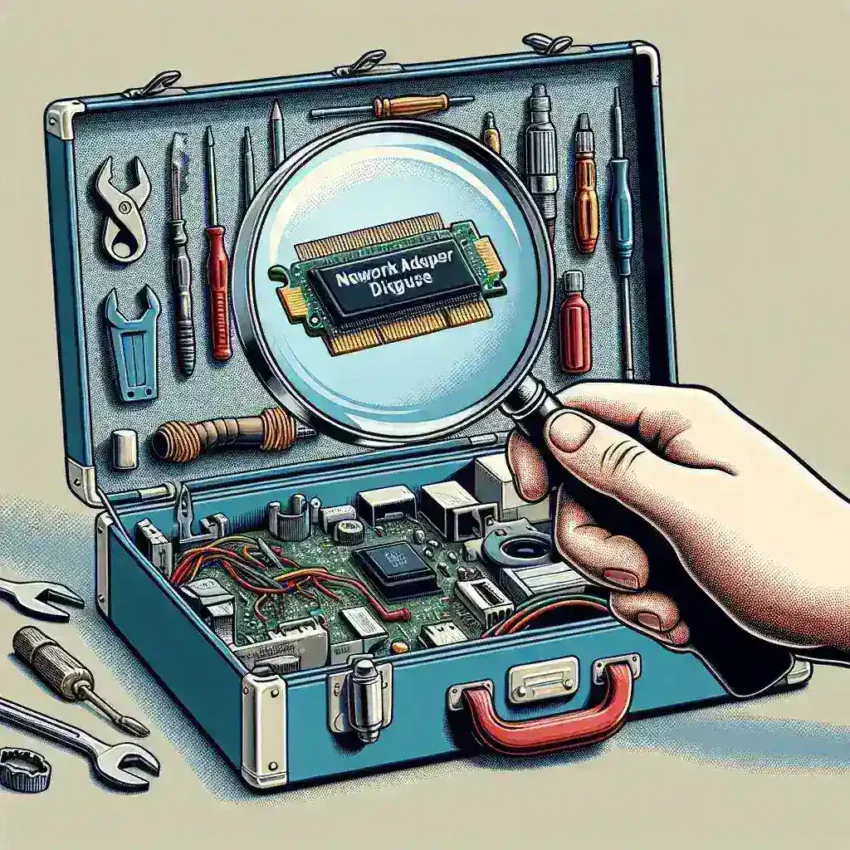Diagnosing a network adapter to determine if it has driver issues can be essential for resolving network connectivity problems. Network adapters connect your computer to a network, and the drivers are software that allows the operating system to control these adapters. When drivers are outdated, corrupted, or incompatible, your network functionality suffers.
Common Symptoms of Network Adapter Driver Issues
To efficiently diagnose network adapter driver issues, it’s critical to recognize the symptoms associated with these problems. Below is a table showing common indicators:
| Symptom | Description |
|---|---|
| No Internet Connection | Despite connecting to Wi-Fi or Ethernet, there’s no internet access. |
| Unstable Connection | Frequent disconnections or unreliable network stability. |
| Low Speed | Slower-than-usual network speeds. |
| Network Adapter Not Detected | Network adapter is not listed in device manager or network settings. |
| Error Messages | Error messages related to network connection or driver issues. |
Steps to Diagnose Network Adapter Driver Issues
1. Check Physical Connections
Before delving into software issues, ensure that all physical connections are intact. This includes confirming that the network cable is plugged in correctly (if using Ethernet) and there are no damages.
2. Reboot Your Computer
Sometimes, simply restarting your computer can fix network adapter issues. This action can reset the network drivers and settings.
3. Use the Network Troubleshooter
Most operating systems come with built-in troubleshooting tools.
For Windows:
- Go to Settings > Update & Security > Troubleshoot.
- Select Internet Connections and click on Run the troubleshooter.
For macOS:
- Open System Preferences, then go to Network.
- Select the network adapter you are using and click on Assist me.
4. Check Device Manager (For Windows Users)
Device Manager provides detailed information about your hardware and allows you to update or roll back drivers.
- Press Win + X and select Device Manager.
- Expand the Network adapters section and look for a yellow exclamation mark.
- Right-click on the network adapter and select Update driver.
5. Update Drivers
Updating drivers is one of the most effective solutions to fix network adapter issues.
- Visit the manufacturer’s website and download the latest drivers for your specific network adapter model.
- In Device Manager, right-click the network adapter, select Update driver, and follow the prompts to point to the downloaded drivers.
6. Roll Back Drivers
If you recently updated your drivers and started experiencing network issues, rolling back the driver to a previous version might help.
- In Device Manager, right-click your network adapter and select Properties.
- Navigate to the Driver tab and click Roll Back Driver.
7. Reinstall Network Drivers
Reinstalling network drivers can clear corruption or conflicts causing the issue.
- In Device Manager, right-click the network adapter and select Uninstall device.
- Restart your computer, which will prompt Windows to reinstall the driver automatically.
8. Reset Network Settings
If the issue persists, resetting the network settings might help.
For Windows:
- Go to Settings > Network & Internet > Status.
- Scroll down and click on Network reset.
For macOS:
- Open System Preferences and navigate to Network.
- Select the problematic network adapter and click the Minus button to remove it, then click Apply.
- Re-add the adapter by clicking the Plus button and follow the prompts.
Conclusion
Diagnosing and resolving network adapter driver issues requires a systematic approach. Always start with the simplest solutions and gradually work towards more complex fixes. Recognize the symptoms, use built-in tools, and ensure your drivers are up to date. By following these steps, you can resolve most network adapter issues and restore your internet connectivity efficiently.

